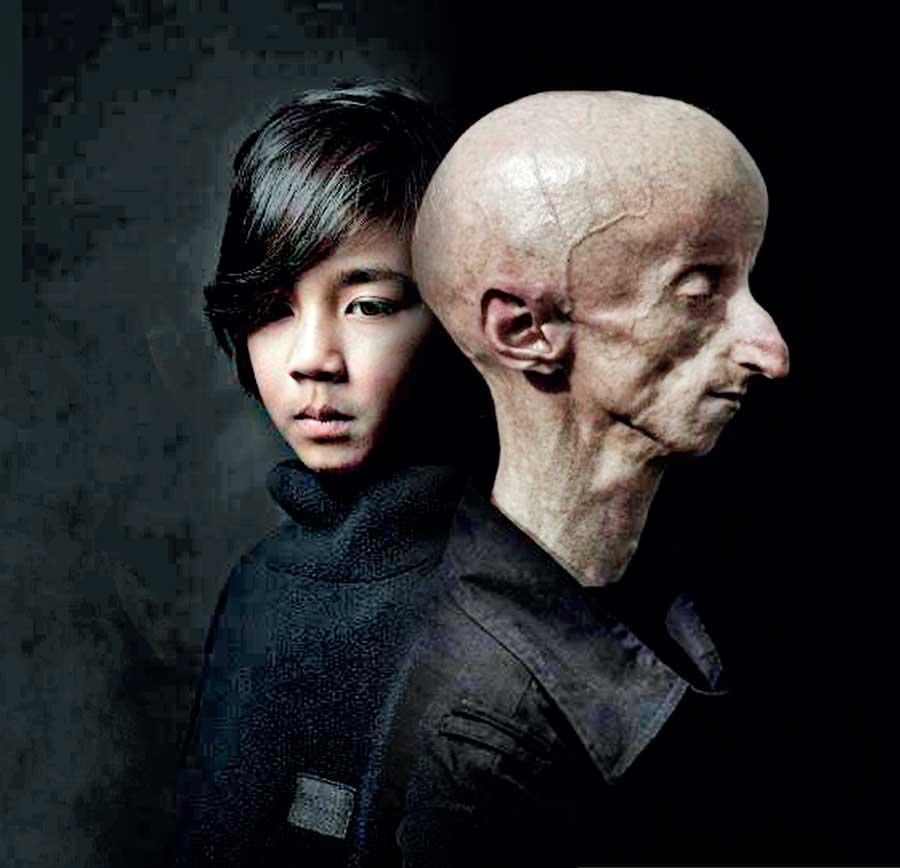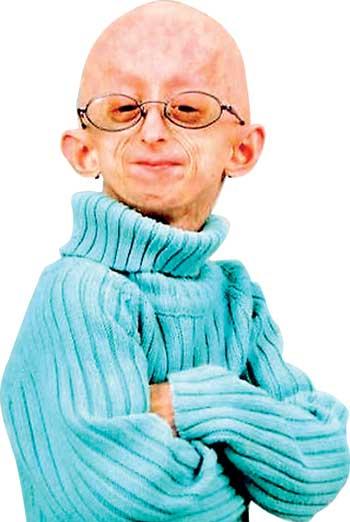27 Dec 2019 - {{hitsCtrl.values.hits}}

 Ageing is, as inevitable as death itself. It is a process inextricably linked to the life-cycles of all living beings that dwell on the face of the earth. Today we will be focusing on an extremely rare progressive genetic disorder termed Hutchinson-Gilford-Progeria Syndrome (HGPS) which, in a manner of speaking, twists this process and defies the natural order; resulting in the unnatural accelerated aging of children. In Greek, the word Progeria means ‘Prematurely Old’, and this mysterious affliction was first described in 1886 by British physicians Dr. Jonathan Hutchinson and later on in 1897 by Dr. Hastings Gilford. It has been said that author F. Scott Fitzgerald’s 1922 short-story “The Curious case of Benjamin Button” was inspired by
Ageing is, as inevitable as death itself. It is a process inextricably linked to the life-cycles of all living beings that dwell on the face of the earth. Today we will be focusing on an extremely rare progressive genetic disorder termed Hutchinson-Gilford-Progeria Syndrome (HGPS) which, in a manner of speaking, twists this process and defies the natural order; resulting in the unnatural accelerated aging of children. In Greek, the word Progeria means ‘Prematurely Old’, and this mysterious affliction was first described in 1886 by British physicians Dr. Jonathan Hutchinson and later on in 1897 by Dr. Hastings Gilford. It has been said that author F. Scott Fitzgerald’s 1922 short-story “The Curious case of Benjamin Button” was inspired by
this disorder.
Q What is the cause of Progeria?
Progeria is caused by a point-mutation in the LMNA gene. The LMNA gene codes a structural protein called prelamin-A which undergoes a series of processing steps before attaining its final form; Lamin A. This protein plays an integral role in determining the shape of the nucleus within a cell, functioning as a scaffolding component of the nuclear envelope. The afore mentioned point-mutation gives rise to an aberrant variation of the prelamin-A protein, referred to as progerin. This altered protein compromises the stability of the nuclear envelope, irreparably damaging the nucleus, leading to premature cell destruction.
Q How common is this condition?
This condition is extremely rare. It is reported that Progeria affects 1 in every 4 million births worldwide, with all genders and races affected equally. According to the Progeria Research Foundation, as of September 2019, 161 children from over 50 countries have been identified as children living with this disease.

Q Can it be inherited?
Although Progeria is an Autosomal Dominant genetic disorder, it is rarely inherited, as the carriers have a very short life-span and do not live to reproduce children.
Q What are the Signs and Symptoms?
Affected children are born looking physically healthy, but they start exhibiting the myriad characteristics of accelerated ageing within the first two years of their life which include,
Growth Failure – short stature, slow weight gain, delayed tooth- eruption
Abnormalities of the skull & face - beaked nose, large head (macrocephaly), undersized jaw(micrognathia)
Physical changes of Ageing- wrinkled skin, hair loss, decreased range of motion of joints, loss of body fat and muscle
However, this condition does not affect intellectual development or the development of motor skills such as sitting, standing, and walking. Also, of note is that, other problems associated with normal ageing such as, the increased risk of cancer and degenerative arthritis are also not seen in Progeria sufferers.
Q How is Progeria Diagnosed?
Progeria can be suspected based on the signs and symptoms exhibited by the child during the first two years of their life. The diagnosis is based upon a thorough clinical evaluation, characteristic physical findings and a careful patient history, conducted preferably by a paediatrician. The definitive mode of diagnosis however, is made through genetic testing.
Q What is the Treatment?
As there is no known cure for Progeria, a majority of the afflicted do not live past the age of 13 years. People with Hutchinson-Gilford progeria syndrome experience severe hardening of the arteries (arteriosclerosis) beginning in childhood. This condition greatly increases the chances of having a heart attack or stroke at a young age. These serious complications can worsen over time and are life-threatening for affected individuals.
However, a new study published in The Journal of the American Medical Association (JAMA) in 2018 reports that Lonafarnib, a type of farnesyltransferase inhibitor (FTI) originally developed to treat cancer, was shown to be effective and helped extend the survival of children with Progeria. Those treated with this drug showed improvement in one or more of four ways: gaining additional weight, better hearing, improved bone structure and/or, most importantly, increased flexibility of blood vessels.
Other than lonafarnib, the treatment of HGPS is directed toward the specific symptoms that are apparent in each child. Disorder management may require the coordinated efforts of a multi-disciplinary team of specialists, who may need to comprehensively plan an affected child’s treatment.
Q Are there other conditions similar to Progeria in the world?
Yes. Hutchinson-Gilford Progeria syndrome belongs to a group of rare genetic disorders called ‘Progeroid Syndromes’ where shortened life-spans and conditions that mimic physiological aging is also seen. All disorders in this group arise from mutations of a ‘single’ gene. Werner syndrome, Bloom syndrome, Rothmund-Thomson syndrome, Cockayne syndrome and Xeroderma pigmentosum are a few examples for such diseases.
(The author is specialised in MO-Dialysis and works at the Base Hospital Tellippalai)
21 Dec 2024 5 hours ago
21 Dec 2024 21 Dec 2024
21 Dec 2024 21 Dec 2024
21 Dec 2024 21 Dec 2024
21 Dec 2024 21 Dec 2024